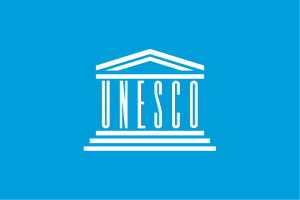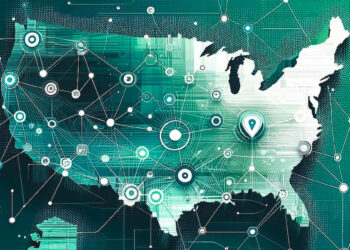The United Nations Educational, Scientific, and Cultural Organization (UNESCO) has launched a Global Open Access Portal (GOAP). GOAP is an interesting website, designed to summarize the current status of open access to scientific information, especially from a regional and country-specific perspective. Key features include what UNESCO calls “critical assessments of major barriers to OA in each country; key organizations engaged in OA; and funding and deposit mandates.”
UNESCO is clearly using the portal to promote OA, especially in developing countries, but most of the information is factual, not polemical. It might well be useful for market research purposes. It never occurred to me to wonder how OA was doing in the Arab States in general or Egypt in particular, but it looks like quite a lot is going on.
The content appears to be more encyclopedic than journalistic, and there is a lot of it. This is the place to find out about the major publishers, libraries, consortia, organizations, statistics, databases, laws, etc., but not the next big event, although some events are listed. For the USA, the presently open OSTP Request for Information on Public Access is not listed.
There is however a certain amount of pro-OA rhetoric. For the United States, the so-called “Potential Barriers to OA” entry simply says: “Major barriers are widespread misunderstanding around OA; a well-funded publishing lobby.” Interestingly one of the four listed GOAP sponsors is the U.S. State Department, but whether the State Department shares this view is not clear.
There is also a listing of major OA repositories, categorized by what GOAP calls thematic areas, which are basically disciplines, including Arts and Humanities. In the Sciences area, I was happy to find a project of mine leading the list, namely WorldWideScience.org. However, WWS.org is not a repository; rather, it is a federated search system featuring multi-lingual translation of queries and responses. The actual content lies elsewhere around the world.
On the social media side there is even a discussion board, called the Open Access Community, as well as links to other discussion forums.
One event that is featured is the recent UNESCO “Open Access Forum”. The on-line program of the Forum in turn provides access to UNESCO’s “OA Strategy” paper. The Strategy paper makes clear where UNESCO is coming from and how GOAP fits in. It says the following:
OPEN ACCESS STRATEGY
One of UNESCO’s overarching goals is to build inclusive knowledge societies by harnessing information and communication technologies to maintain, increase and diffuse knowledge in the fields of education, the sciences, culture, and communication and information, including through open access.
Open Access (OA) is the provision of free access to peer-reviewed, scholarly, research information (both scientific papers and research data) to all. It envisages that the rights-holder grants worldwide irrevocable right of access to copy, use, distribute, transmit, and make derivative works in any format for any lawful activities with proper attribution to the original author. Through Open Access, researchers and students from around the world gain increased access to knowledge, publications have greater visibility and readership, and the potential impact of research is heightened.
There are over 6000 OA journals and over 1200 institutional OA repositories. The major institutional repository software, DSpace, has reached over 1000 installations recently. However, only 20% of scientific journal articles are available via Open Access. Since 2000, the average annual growth rate has been 18% for the number of Open Access journals and 30% for the number of articles. Spain has recently taken the legislation route to OA by enacting law on Science that includes provision for OA mandate.
To date, UNESCO has mainly been engaged in capacity building and awareness-raising about OA. Pursuant to the General Conference Resolution 35C/Resolution 63, UNESCO is currently engaged in mapping the OA activities of various existing stakeholders (i.e. researchers, research institutions, publishers and librarians) and initiatives in the world. This work will be concluded by October 2011. The results of this activity will form the basis of Global Open Access Portal (GOAP) which will be launched during the General Conference in 2011.
Clearly UNESCO is committed to promoting copyright-free access to all scholarly publishing, throughout the world, presumably with the active support of the U.S. State Department. That this position is controversial is an understatement, but in any case the GOAP portal is quite functional.
Discussion
9 Thoughts on "UNESCO Launches Global Portal to Track Open Access"
I take exception to your sweeping statements in the last paragraph. First, it is a canard that open access equals copyright-free access. As the Creative Commons folks state on their site: “you keep your copyright but allow people to copy and distribute your work provided they give you credit — and only on the conditions you specify.” (http://creativecommons.org/choose/)
Second, I question the presumption that the US State Department actively (which I take to mean “in an ongoing manner”) supports the GOAP, let alone UNESCO’s overarching commitment to promoting open access. I couldn’t find any details on either UNESCO’s or the State Department’s website on the nature of the support, but it could just as easily have been one-time funding for project development. And funding a project does not commit the funder to unequivocable philosophical support of the project or its creators. (Indeed, the idea of the State Department’s ongoing support of this project is further called into question by the current strained relations between the US and UNESCO following the latter’s vote to admit Palestine.)
The term “copyright-free” is my term for the UNESCO definition of OA, given above, which seems rather extreme to me. They do not mention Creative Commons. I agree that open access need not be copyright-free in UNESCO’s sense. That is why I use the term.
I don’t actually know what State’s involvement is, except that they are one of just four outfits thanked for their “generous support.” I do say earlier that it is not clear whether State shares the UNESCO view, at least on the US “barriers,” which is itself a loaded term. I think it is a very important policy question, just what State’s role is here, especially given the OSTP RFI. State can be a loose cannon.
I don’t think I see the “copyright-free” part as clearly as you do, David. It could be interpreted that way, but it could also be seen the other way too. Giving out the “right of access… for any lawful activities” leaves room for copyright law around the world to define what are unlawful activities, e.g. selling exact copies.
David, it is disingenuous of you to call the above “the UNESCO definition of OA” when it is the same definition as used eg. in the Berlin Declaration
http://oa.mpg.de/berlin-prozess/berliner-erklarung/
which has been signed by hundreds of universities, research institutions and libraries.
You don’t define your term “copyright-free”, so it is hard to evaluate what you mean, but I presume that you agree that the definition Open Access above is perfectly compatible with current copyright laws?
That you label this definition “extreme” says more about you, than it does about UNESCO or the signatories of the Berlin Declaration.
Anderss, I call it the UNESCO definition because it is the definition given by UNESCO. The article is about the UNESCO portal, not OA. Its appearance elsewhere is irrelevant here.
As I said above, copyright-free refers to this definition, where the document may have a copyright but it is free to all. Free access to all is certainly extreme vis a vis the present system. It is a radical concept, even if it merely means author pays, in which case it shifts the cost onto the research community, resulting in that much less research being done.
Hello David, I translated part of this article and published in my blog. Please take a look at it and let me know if you’re OK with it.
Needless to say you can use my translation as you see best.
Thank you for this article. Best, Julia
by the way, this is the post: http://biblioiie.wordpress.com/2011/12/22/portal-timbo-recursos-open-access/



